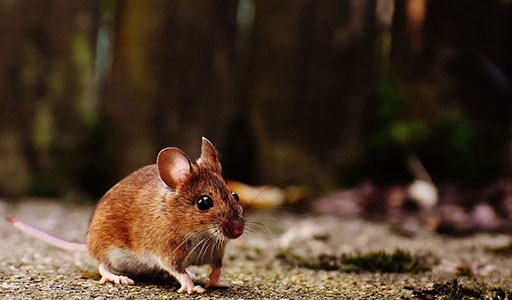Deer Mouse Control
Do you need to get rid of Deer Mice? We can help!

Deer Mice Removal Strategies
Deer mice are small mice that live on a diet of primarily insects, seeds, nuts, and berries. These tiny creatures often nest in covered outdoor areas. However, during the cold winter months, deer mice may enter into your home, garage, or shed in search of shelter. They are even known to build nests in abandoned boxes in your basement or attic. In very little time, deer mice can take over your belongings and these places. They pose a threat in the form of transmitting potentially fatal diseases like Hantavirus Pulmonary Syndrome.
To avoid further property damage or disease, call in the experts at Trutech to conduct a comprehensive evaluation of your deer mouse problem. Once they have a look at your home, they can know where the mice are getting in and can get to work creating innovative mouse control measures to keep these creatures out. Our humane mouse traps and other mouse control services will solve all of your deer mouse problems without giving you a heavy conscious.
At Trutech, we value the lives of all animals, whether they are as big as a coyote or as small as a deer mouse. Our licensed experts have the skills and knowledge that it takes to solve your wildlife maintenance issues, no matter what animal is causing your problems. So, whether you are searching for deer mouse control, trapping, or deer mouse removal services, you can be confident that you are doing it in the most environmentally sensitive way thanks to the experts at Trutech.
Deer Mice Problem

Signs a Deer Mouse is on Your Property
If inside your house, deer mice may damage or tear clothing and furniture when attempting to gather materials to build their nests. Scraps of fabric or paper products can sometimes be found scattered around the house when a deer mouse infestation is present.

Dangers of Deer Mice Infestation
When deer mice gather in homes, they typically store food near their nests. The pests scavenge through boxed or pantry foods, as well, contaminating items with their urine and feces. Their waste and saliva can transmit Hantavirus, which causes sickness in humans. The bacteria may spread to those that breathe it in or come in contact with the pests’ excrement.
Humane Deer Mice Removal & Control Strategies

Entry into property
On average, deer mice are around seven inches long. Their small size allows them to enter through even the tiniest cracks in a structure’s foundation. In addition to their petite frames, the pests are excellent climbers, which helps them get to hard-to-reach spots.

Trapping & Removal
As contact with a deer mouse, their nest, or their droppings has the potential for transmitting infection, homeowners should use caution when attempting to remove the pests. Traps are not always foolproof and are best left in the hands of professionals. For expert assistance with deer mice infestations, contact Trutech’s staff of licensed technicians.

Prevention & Exclusion
Prevent the small rodents from entering buildings by sealing cracks one-fourth of an inch in diameter or larger. Refrain from using materials that can be easily chewed through by repairing openings with concrete or metal. Also be sure to secure windows, doors, and vents.
Frequently Asked Questions
A variety of factors may affect when and where deer mice choose to come indoors. These can include:
- Location – Finding a deer mouse in the house is more common in neighborhoods near forests and fields.
- Structural Faults – With their small size and agility, these rodents have no problem making their way indoors through small cracks and gaps in homes.
- Resources – Easy access to food and undisturbed attics, basements, and crawl spaces can attract deer mice to homes.
- Weather – Homes near natural deer mouse habitats also notice more rodent problems in the fall, when cooling temperatures drive the pests inside for shelter.
Residents living near typical deer mouse habitats should ensure that vents, roofs, foundations, and other openings in homes have no gaps or cracks large enough to let rodents indoors. Because of the possible spread of disease, contact the Trutech experts at the first sign of a deer mouse in the house.
The less than favorable reality of rodents infesting homes is that they are capable of carrying and spreading illness. Common deer mice diseases include:
- Lyme disease – typically causes fevers, rashes, aches, and facial paralysis.
- Hantavirus – leads to Hantavirus Pulmonary Syndrome, which starts with fever, fatigue, and aches, but progresses to respiratory issues, head and stomach pains, and even death.
While both of these are distressing, experts most associate deer mice with Hantavirus.


